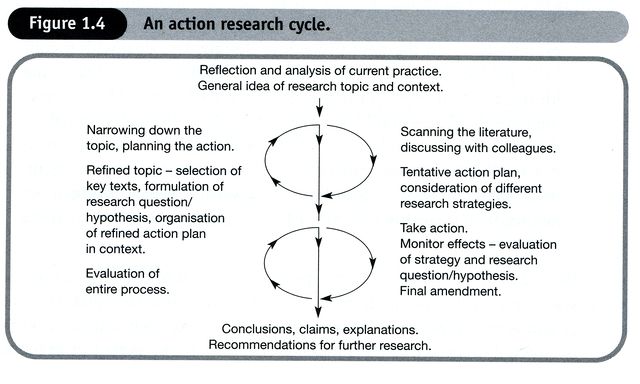Documentation:Learning Design/Learning Design Patterns Project
Learning Design Patterns Project
Provide Background explanation
Consent: This page is dedicated to a departmental project that will help us define and catalog our learning design practices and help move us toward validating and evaluating these practices with various stakeholders (students, OLFMs, other designers, others?) as well as moving toward innovation. If you are interested in participating and contributing to this page and to the project your contributions will be used toward a variety of research endeavors.
Action Research Cycle
File:Action Research Cycle Springer.pdf Action Research Cycle Springer.pdf
Goals and Research Plan
Goal: To develop learning experiences that are engaging and meaningful to students who are working in a distance learning environment. Goals: Set of promising design patterns that work in the TRU Open Learning environment? Goals: Develop a methodology to evaluate our learning activity designs/patterns so that we can constantly improve them
First phase: Identify current patterns/practices that we think work best.
1: Identify current patterns/practices that we think work best. What are our current practices and what are the perceptions of effectiveness?
- Wiki activity - refine and develop goals and develop/refine questions
- Survey and follow up focus group of current ID perceptions
- Create catalog of current activity patterns
- Literature review of learning design models and activity patterns
- Develop survey questions for feedback mechanisms for learning/instructors/others?
- Share results of wiki/survey/literature review (research paper 1!)
- Possible outcome: A few activity templates (to be used for phase 2)
- Others?
2. Validate whether or not these activities are effective and engaging (how can we move forward to do this? What are the barriers?)
- Embed feedback mechanisms into courses and collect data
- Share data analysis with department
- Learning analytics and evaluation (by direct observation, retention, completion rates)
- Refine and develop templates
3. Innovate and evaluate new designs
Questions
Have we framed the questions correctly? What are some other questions we as a department what want to investigate? Discussion and brainstorming: What elements make a good activity? Why do we think they work? (1 or 2 learning activity designs that we think work and integrate into our courses). Ideas: Get concrete examples...get a pared-down template., A weekly blog called my favorite design? What is the role of the design, what is the role of OLFM, what is the role of the students?
Final set of questions:
- How would you characterize this design and why do you think it is successful?
- What is the role of the facilitator/instructor, what is the learners' role?
- Under what conditions does this activity work and under what conditions does it not (ie facilitation, learning environment, f2f)
- What constraints/costs/org/time factors are involved?
- How do we share these practices? (Griff add that suggestion to you question)
